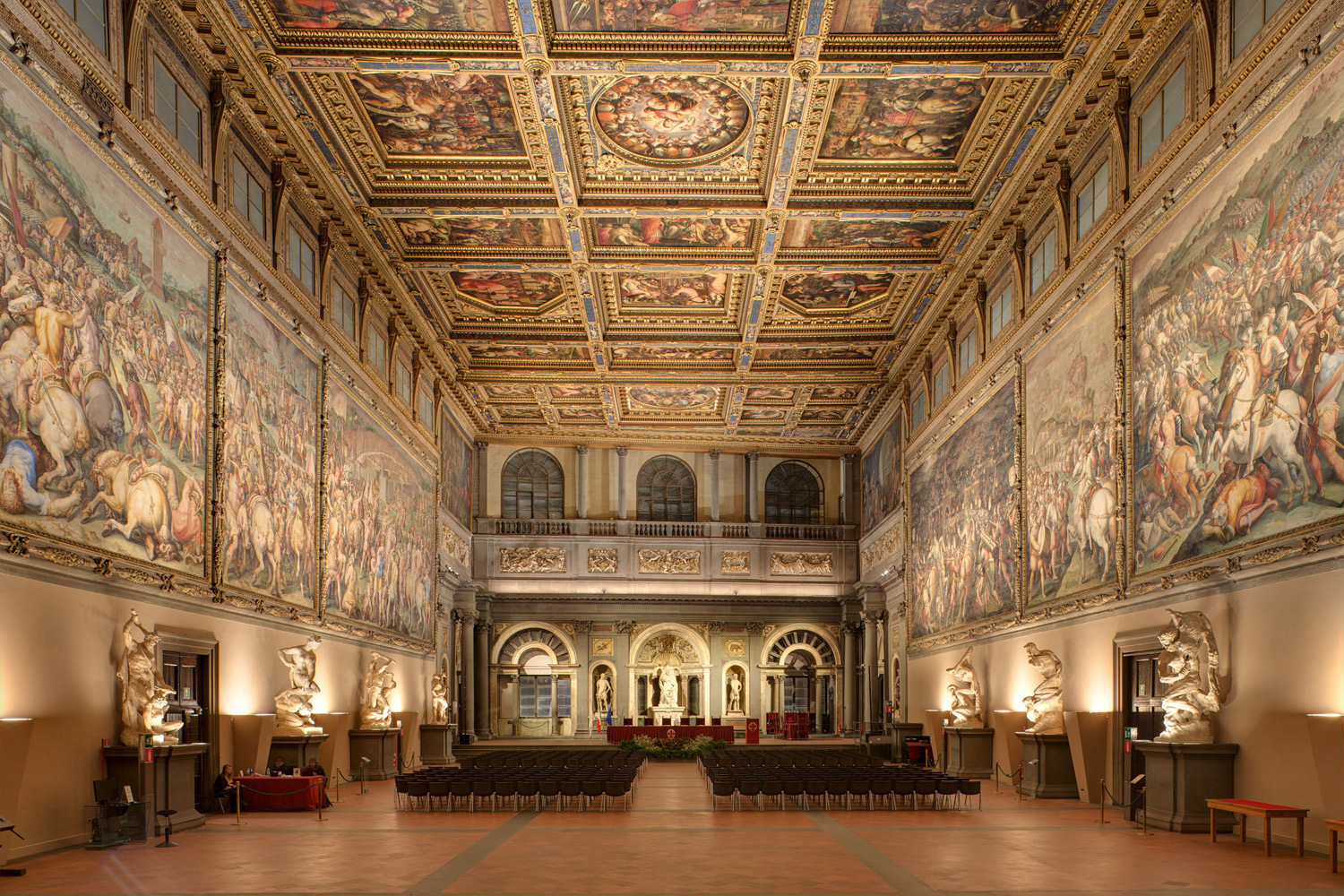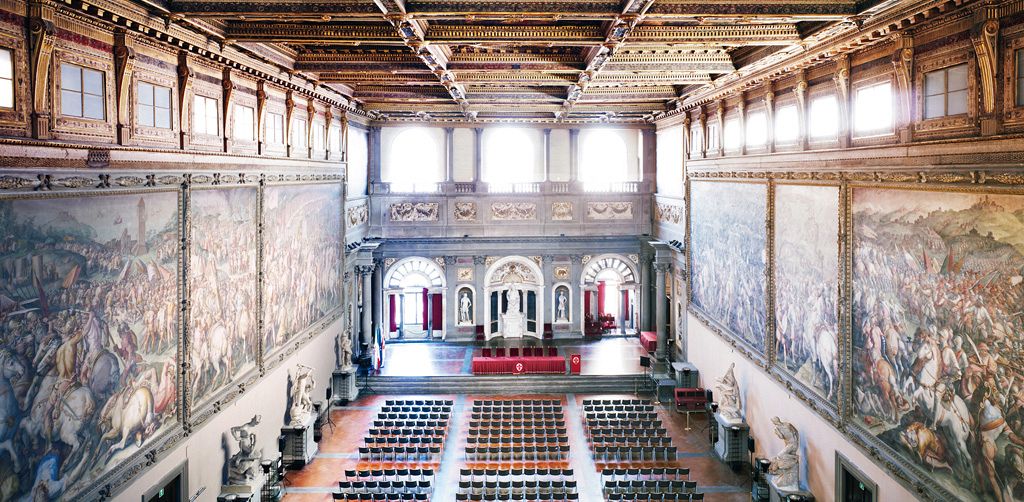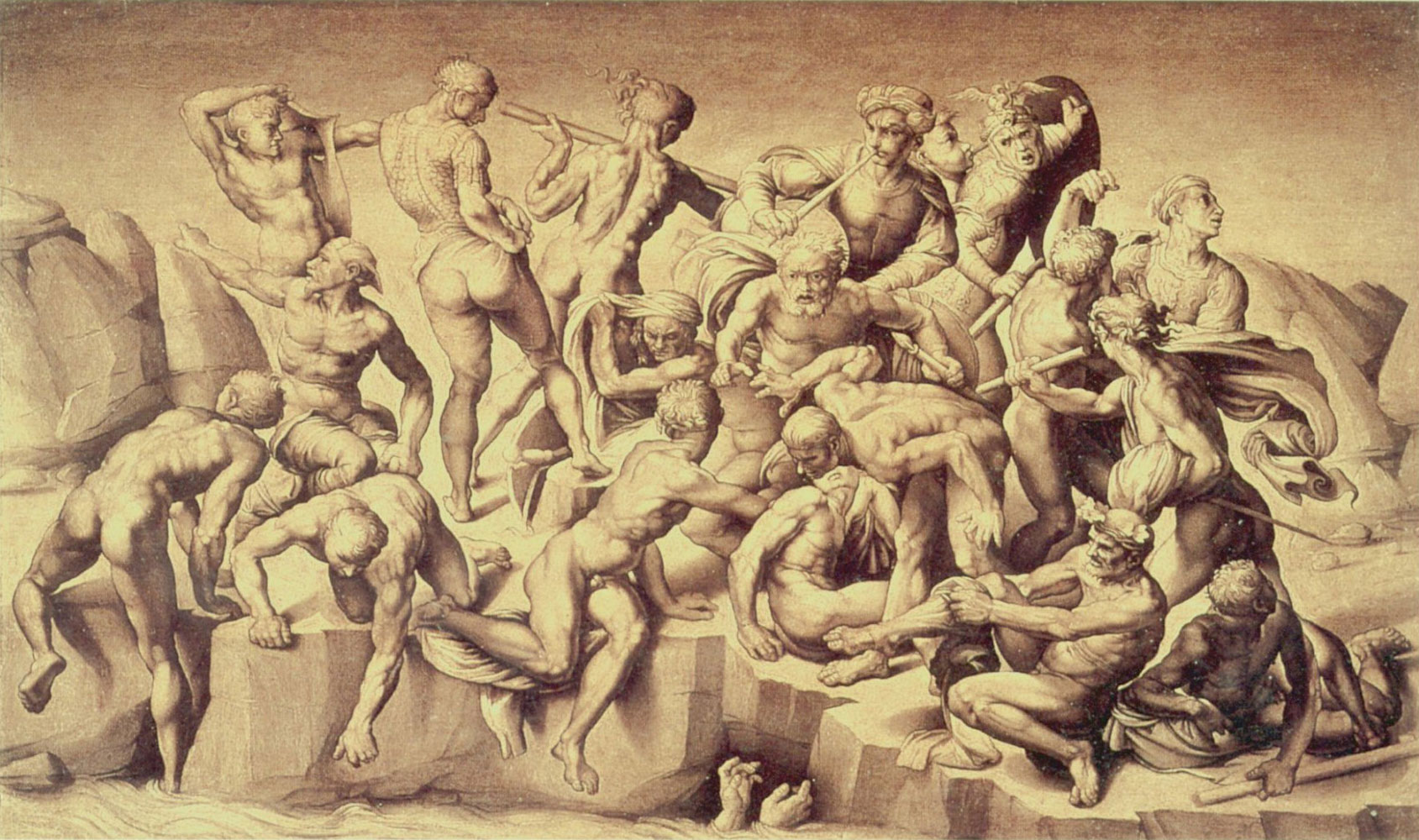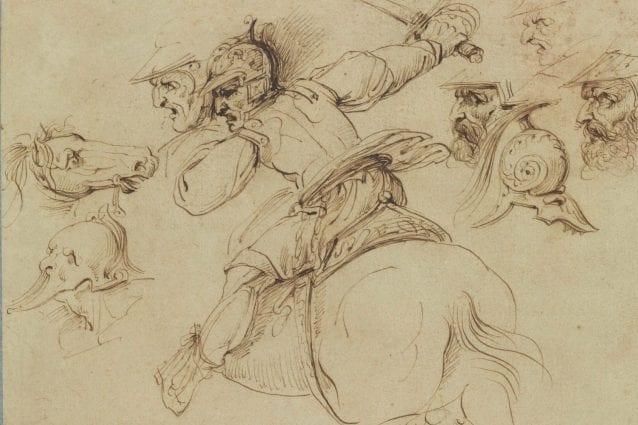The Salone dei Cinquecento: a journey through the art of Florence

Welcome to the wonderful world of the Salone dei Cinquecento!
If you love art and wish to immerse yourself in the history of Florence, you have come to the right place. In this post, we will explore the origins of this magnificent hall and its incredible frescoes. We will also uncover the mysteries surrounding the unfinished works of two of the greatest geniuses of the Renaissance: Michelangelo Buonarroti and Leonardo da Vinci.
Get ready for an unforgettable journey into the heart of Tuscan art!
The Salone dei Cinquecento: a journey through the art of Florence

In the heart of Florence, back in 1495, a place of great political and cultural importance arose: the Salone dei Cinquecento. Built during a period of restoration, this room, located inside Palazzo Vecchio, is one of the places to see in Florence as it is a symbol of its history. In fact, it housed the representatives of the Consiglio Maggiore, the city’s governing body. But who was the architect of this magnificent work and what is there to admire?
THE GENIUS OF SIMONE DEL POLLAIUOLO AND THE INFLUENCE OF SAVONAROLA
The commission to build the Salone dei Cinquecento was given to Simone del Pollaiuolo, known as ‘il Cronaca’, with the assistance of Francesco di Domenico and Antonio da Sangallo. It was Frà Girolamo Savonarola who commissioned the construction of this imposing hall, which was to represent the power and importance of the Republic of Florence.
The construction of the Salone dei Cinquecento was not only a result of Simone del Pollaiuolo’s architectural talent, but was also strongly influenced by the ideas and religious fervour of Frà Girolamo Savonarola. A Dominican preacher with a great influence on Florentine society of the time, he sought to promote a more equitable and just form of government, and in this salon he wanted to represent his vision of a place where the representatives of the Major Council could meet to make important decisions for the good of the Florentine people.
The architecture of the Salone itself reflected the ambition and power of the Florentine Republic. With its imposing dimensions of 52 metres by 23 metres, the Salone dei Cinquecento was a vast and majestic room, designed to impress and intimidate those who entered. The walls decorated with frescoes and the statues that adorned the side spaces added a sense of grandeur and magnificence to the room.
The Salone dei Cinquecento quickly became the centre of Florence’s political and cultural life. Important ceremonies, assemblies and celebrations were held here. The hall was a meeting point for citizens and a symbol of power.
THE ARTISTIC LEGACY OF GIORGIO VASARI
In 1563, Giorgio Vasari set to work on the current pictorial decoration of the Salone dei Cinquecento. Vasari, besides being a talented painter, was also a Renaissance architect and art historian. His presence in the Salone brought a new chapter in the artistic evolution of the room.
The pictorial decoration designed by Vasari depicts the glorious military exploits of the Florentine Republic. Each fresco is a tribute to the victories and conquests that the city had achieved over the years. The paintings depict the conquest of Siena, the seizure of Porto Ercole, Cosimo I’s victory at Marciano della Chiana, the defeat of the Pisans at San Vincenzo, the attack on Livorno by Maximilian of Austria and the assault on Pisa by Florentine troops. These representations captured the heroism and grandeur of Florentine military feats, celebrating the power and glory of the Republic.
The ceiling of the Salon consists of a series of panels illustrating the most significant episodes in the life of Cosimo I de’ Medici, who brought the Medici family to power. Each panel tells a different story, offering a comprehensive view of Cosimo I’s life and exploits. In the centre of the ceiling is the scene of Cosimo I’s appointment as Grand Duke of Tuscany, a moment of great political and social importance in Florentine history.
In addition to the frescoes, the walls of the Salone dei Cinquecento also house six majestic statues, including Michelangelo’s famous Genius of Victory. This sculpture, originally created by Michelangelo for the tomb of Pope Julius II, found its definitive position in the Salone dei Cinquecento, adding a touch of grandeur and majesty to the room.
Vasari’s pictorial decoration represents an important testimony of the Mannerism, characterised by a refined style and a search for dramatic effects. Vasari’s paintings in the Salone dei Cinquecento are distinguished by their vibrant colouring, dynamic poses and attention to detail, giving the entire room a majestic and solemn atmosphere.
Today, the Salone dei Cinquecento remains an artistic and historical jewel of Florence. A visit to this magnificent room offers a unique opportunity to immerse oneself in Giorgio Vasari’s artistic legacy and to appreciate the grandeur of the Florentine Republic during the Renaissance period. Walking around and admiring the frescoes and statues, we can still feel the energy and importance that this room had in the history of Florence and in the evolution of Renaissance art.

Michelangelo, Battaglia di Cascina
THE LOST FRESCOES OF THE SALON OF THE 16TH CENTURY
Under the rule of Pier Soderini, the Florentine Republic decided to celebrate its military victories through two extraordinary frescoes. Michelangelo Buonarroti was commissioned to paint the Battle of Cascina, while Leonardo da Vinci was tasked with depicting the Battle of Anghiari. However, both Renaissance geniuses left their works unfinished, but what happened to their work?
Michelangelo, known for his skill in sculpture and painting, accepted the opportunity to create a fresco depicting the Battle of Cascina, a victory of the Florentine army against Pisa in 1364. However, despite having created a preparatory cartoon of extraordinary beauty and vividness, Michelangelo never completed the work. His cartoon became a milestone in the study of art, demonstrating the artist’s mastery in capturing movement and drama.
Leonardo da Vinci, on the other hand, was commissioned to paint the Battle of Anghiari, an important triumph of Florence over Milanese troops in 1440. Leonardo began his work by creating a central scene of extraordinary visual power. However, due to the technical experiments he used and problems with the adhesion of pigments to the wall, Leonardo’s fresco was never completed and gradually deteriorated over the years. Nevertheless, the remaining fragment of Leonardo’s work is considered a treasure of Renaissance art, testifying to his brilliant vision and his ability to capture movement and emotion in his works.
Unfortunately, both of these extraordinary works of art have been lost over the centuries. Despite conservation and research efforts, Michelangelo and Leonardo’s frescoes have never been fully recovered. However, their artistic legacy and the influence they had on art and culture live on through their surviving works and the admiration they inspire to this day.

Leonardo, Battaglia di Anghiari
WHY VISIT THE SALONE DEI CINQUECENTO IN FLORENCE
The Salone dei Cinquecento is an extraordinary testimony to the artistic and political greatness of Florence during the Renaissance. If you are fascinated by art and want to live a unique experience, do not miss the opportunity to visit this magical room.
Book tickets for the Palazzo Vecchio and immerse yourself in the atmosphere of a bygone era, where geniuses such as Michelangelo and Leonardo left their mark. Be part of this incredible Florentine art history!
Follow me on:
About me
In this blog, I don't explain the history of art — I tell the stories that art itself tells.


